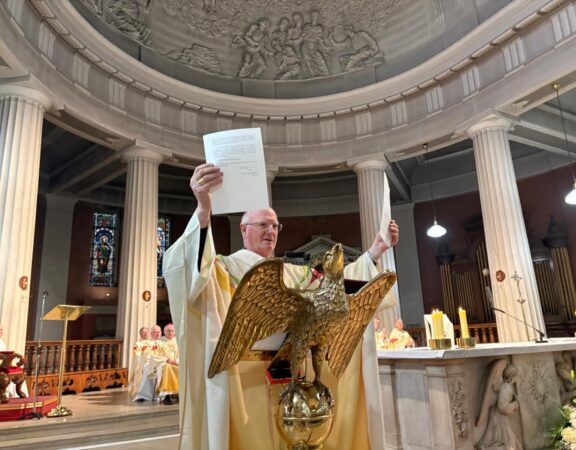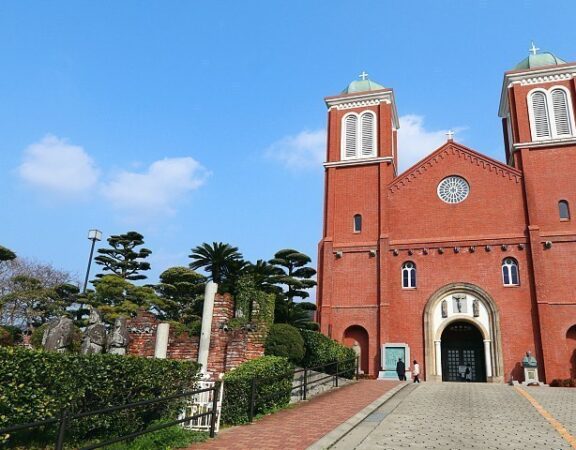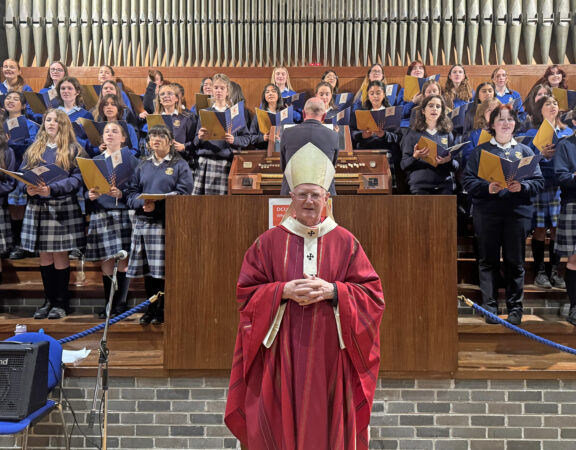It is a great pleasure for me to be here in Avila this morning for the Dedication of this new Church, a Church which will be at the heart of this new Retreat Centre.
I congratulate all those who have worked so well so that this Church could become a reality and become, in its own way, part of the on-going history of this site which has played an important part of Church life in Dublin for almost 150 years, since it was acquired by the Archdiocese of Dublin as a possible site for a Diocesan Seminary. It has been in the hands of the Discalced Carmelites since 1875 but throughout those years Avila has been very much a resource for the entire Church in the Archdiocese of Dublin and I am sure that it will continue to be so in a renewed way in the years to come.
We dedicate this Church in the week in which Pope Benedict XVI published the Apostolic Exhortation Sacramentum Caritatis, which gathers together the fruits of the Session of the Synod of Bishops held in 2005 on the Eucharist as the source and summit of all the Church’s life and mission.One interesting dimension of that Papal Document which springs to my mind today is what Pope Benedict had to say about the role of beauty and art in the liturgy. In that context, I congratulate the architect and the artists who have contributed with their ideas to the beauty of this new Church, and to the hand-workers who have transformed those ideas into reality.
Pope Benedict notes that “Like the rest of Christian Revelation, the liturgy is inherently linked to beauty”. The God of revelation does not reveal himself in anger or fear, as the God’s of the pagans did. God’s revelation is a revelation in beauty.
We should not forget that God’s first self-revelation – the first glimpse we get of what God is like – is in the beauty of creation, which must still be explored and for which we have a responsibility to maintain. In fact, in our time there is a growing awareness of the damage which we have humankind have done to the integrity of that beauty.
Our first glimpse of God is in his creation. Christian revelation is about a deeper dimension of beauty. The Christian message is not a collection of rules. It is an encounter with Jesus Christ who through his own self-giving love until the end, shows us how love can transform darkness and distastefulness, and even the darkest mystery, that of sin and death, into the radiant light of the resurrection. God’s revelation is a revelation in beauty, because beauty is in the first place an attribute of God himself.
This centre will hopefully become in the years to come a centre of renewal of the true sense of Christian belief. Eucharist is at the heart of renewal in the Church. Every great reform in the history of the Church has in some way been linked to the rediscovery of belief in the Eucharist. The Church can renew and reform itself when it realises that the presence of Christ in the Church is Eucharistic presence, a presence which recalls how Christ first gave himself for us in the sacrifice of the Cross. The Eucharist is a reminder of that fundamental fact of the Christian life, that God loved us first.This in many ways is the message that is at the heart of the Gospel we have just heard. The Pharisees and the Scribes, with whom Jesus is in discussion, had invented all sorts of norms and preconditions which were required if someone was to attain the forgiveness of their sins. The image of Jesus’ forgiveness, which the Gospel of the prodigal son reflects, is different. God’s forgiveness comes in an instant. It is sufficient for the son to return to his father. At the son’s first appearance there is no examination of rules and norms, no negotiating the terms of forgiveness. The Father just rushes out to greet him, despite his earlier behaviour. The father rushes out to embrace him and to surround him with gifts and affection and welcome. God loves us before we have a chance to negotiate with him.
Perhaps we have underestimated the importance of the notion of forgiveness in our world. This is no doubt in part due to the fact that we have underestimated the reality of sinfulness and we do not feel the need for forgiveness. But we all need to fell the comfort of being accepted. We all need to realize that we are not self-sufficient. Curiously we can only sustain our own self-esteem when we know that we can attain the reality of forgiveness, the reality that we are accepted for what we are and for who we are with all our weaknesses. God loves us for who we really are, not for our image of what we should like to be. The Gospel of forgiveness helps us to know ourselves and to accept ourselves.
Perhaps much of the anxiety and even despair that we encounter sadly in our world is due to the fact that we feel that our human fulfilment is achieved primarily through self-affirmation, rather than through the ability to experience love. It is when we experience love that we are freed to be loving persons ourselves who can give ourselves for others, as Jesus did for us.
Forgiveness is not about rules and norms and processes as the Pharisees thought. It is about encountering a generosity which exceeds all the rules, which eludes the processes and the negotiation, which surpasses all our expectations, to the extent that to many it might even appear as unfair and unreasonable, as the elder brother thought in today’s Gospel.
Part of the ministry of renewal that will take place in this new Centre will be ministry of reconciliation. Avila must become a place where people encounter the love of Jesus in the particular form of the sacrament of reconciliation. Today’s Gospel reminds us that the link between the Sacraments of Penance and the Eucharist is not just in the need to approach the Eucharist in a state of preparedness. It is above all in the fact that the final outcome of the process of conversion is a banquet; it is the restoration of full ecclesial communion; the final stage in the process of forgiveness is the fact that
This Church building must now become Church. It must become the focal point for a community which celebrates the Mysteries of Jesus’ Death and Resurrection, in which the Word of God is proclaimed, in which reconciliation is achieved, in which the love of God is practised, in which people are nourished by the body and blood of Christ.
From this building a renewed community will go back out into everyday life bringing the message of Jesus, which is a message of love and caring, a message of truth and of hope for people lives.
True worship is to be judged not just in terms of theological orthodoxy and liturgical niceties but in terms of the sincerity and authenticity by which we live out the Christian message. Through our participation at the Table of the Lord we are dedicated to and called to the service of Jesus and to becoming light for the world in which we live. Our participation in the Eucharist must always lead us into the concrete practice of love.
True worship has moral consequences; it has consequences for the way we live. But the Christian life is not simple moralism. It is before all else the joy-filled discovery of love at work in our hearts if we return to the Lord and accept his gifts, as the prodigal son did. His gift of forgiveness allows us to respond to his love with our whole being, while remaining ever conscious of one’s own weakness.
Renewal in the Church is never something external or superficial. It is never just a process about committees and working groups. It is rather a process of renewed understanding and of meaning. It involves a community day by day – in the changed and challenging situation of the world in which we live – entering into the mystery of the Word made flesh in order to see how we can sanctify the world around us, in all its corporeity, its bodily-ness, in its concrete expressions.You will see during the blessing of the altar the great respect in which the Church holds the altar of the new sacrifice of Jesus. The altar will be anointed, it will be clouded in the smoke of incense rising up towards God, it will be blessed with water which symbolizes new life. The altar and the area around it are consecrated to be a Holy Place, representing Jesus Christ. They are destined to become a holy place where we can come with all our troubles and anxieties needs and aspiration and place them before the living God, who loves us and forgives us.
May the occasion of the dedication of this Church be a call to renewal and rededication all of us. We are called to enter day by day in a deeper way into our understanding of Jesus Christ as the word and the revelation of God, who speaks to us in our culture and in our context and challenges us to recognize his light which leads us and guides us on the path of our life.







